Stunned researchers discover rare skull of 230kg ‘giant goose’ that went extinct 50,000 years ago – finally revealing what the animal looks like
Until about 50,000 years ago it roamed the murky swamps of Australia.
But scientists have never quite known what the ancient ‘megabird’ Genyornis newtoni looked like.
Now all that has changed, as experts have uncovered the most complete skull of the species ever found.
Measuring two meters in length and weighing up to 230 kilograms, new artistic renderings show that it resembled a ‘giant goose’, with small wings and enormous hind legs.
The dodo-like bird, closely related to early waterfowl, is believed to have been exterminated by early humans in Australia who feasted on its melon-sized eggs.
Giant skull of ancient Australian bird Genyornis newtoni (pictured) reveals it was a prehistoric ‘giga goose’
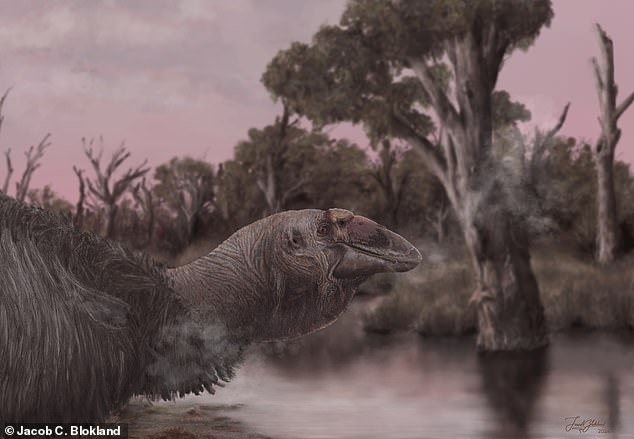
The illustration shows a reconstruction of Genyornis newtoni at the water’s edge in a wetland or swampy environment
Another recent study suggests that the species was affected by bone diseases before becoming extinct about 50,000 years ago.
Stunned researchers managed to excavate the newly found giant skull from the salty, dry beds of Lake Callabonna, a remote area in the outback of South Australia.
One of the discoverers, Dr Phoebe McInerney from Flinders University in Adelaide, said the species resembled a ‘giant goose’.
‘Genyornis newtoni had a long and mobile upper jaw, like that of a parrot, but shaped like a goose,’ said Dr McInerney.
“(It had) a wide mouth, a strong bite force, and the ability to crush soft plants and fruits on the palate.”
Highly flexible joints in the skull allowed him to open his mouth wide, as parrots can, while powerful muscles attached to the back of the skull allowed a strong backward pull on the head.
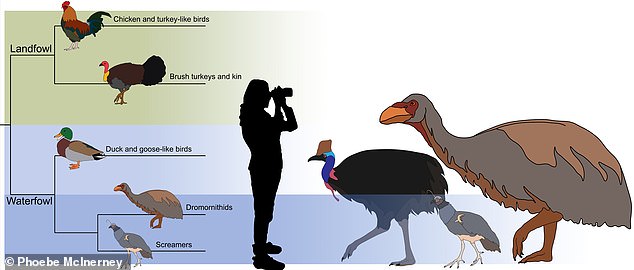
This image shows how Genyornis newtoni (pictured far right) is related to modern land and water birds
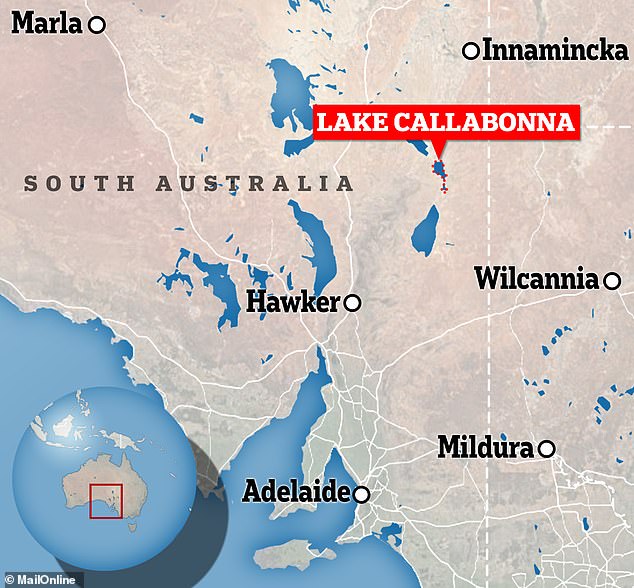
Researchers unearthed the newly found giant skull from the salty, dry beds of Lake Callabonna, a remote area in the outback of South Australia
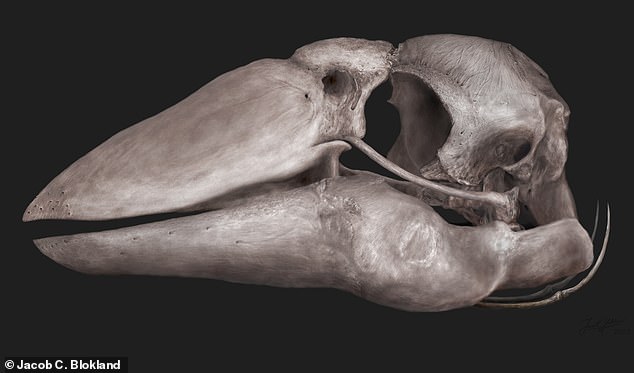
Artistic 3D rendering of the Genyornis newtoni skull. The species was two meters long and weighed up to 230 kilograms
Genyornis newtoni was the last of the large, flightless mihirungs (‘thunderbirds’) endemic to Australia.
The only previously known skull of this species, reported in 1913, was badly damaged and little of the original bone remained, so not much could be inferred about the skull of this species.
But with this new fossil – which stitches together nearly complete fossils from the rest of the body – researchers can reveal what this species really looked like.
In addition to clues from the bones, scientists have interpreted its appearance based on large, flightless relatives, such as Dromornis and the more distantly related emus.
Genyornis newtoni had adaptations for submerging the head in water, including nostrils set far back near the eyes and isolation of the ear from the areas involved in jaw movements.
These properties helped prevent the influx of water and limit hearing disturbances during underwater feeding, although the diet is believed to have been largely vegetable.
“Genyornis is adapted to thrive around swamps, wetlands and lakes,” the researchers said in a joint statement published in The conversation.
‘Today the large freshwater bodies that were once present in northern South Australia are mostly dry salt lakes.
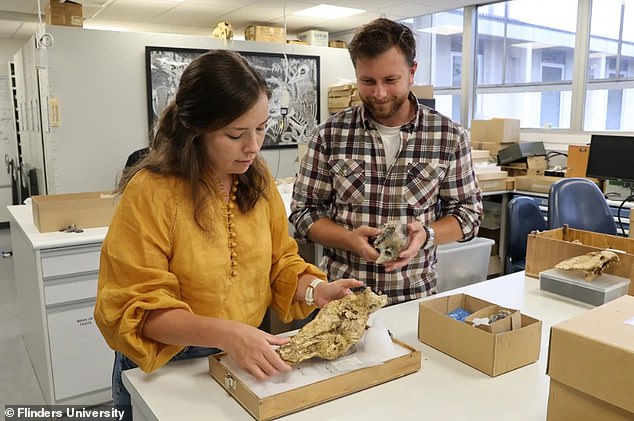
Phoebe McInerney and Jacob Blokland with a Genyornis newtoni skull in the Flinders University palaeontology laboratory
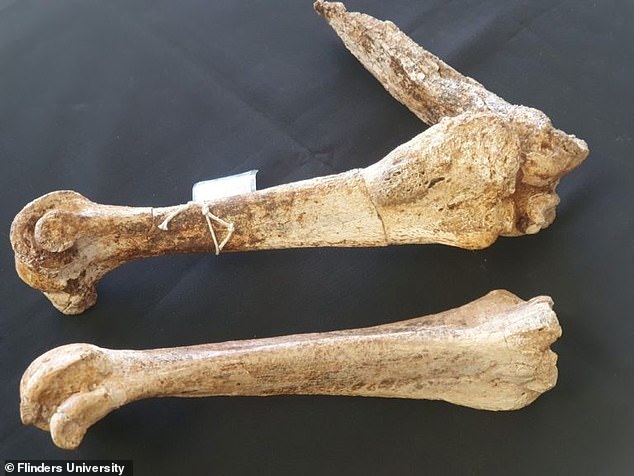
A previous study found that the species was affected by bone diseases before its extinction about 45,000 years ago.
‘The partial dependence on fresh water and the growth of new plants would have become more difficult as ponds and lakes shrank and disappeared.’
The team concludes that the drying of the Australian continent likely contributed to the eventual extinction of Genyornis, but other researchers have placed the blame squarely on humans.
Although Australia suffered from continental drying about 60,000 to 40,000 years ago, the land was probably not strong enough to wipe out the megafauna, an earlier study by experts in the US claimed.
Fragments of burned eggshells from historic human campfires suggest that humans collected and cooked the eggs, causing numbers to plummet.
The newly found skull is further detailed in a study published in Historical biology.
